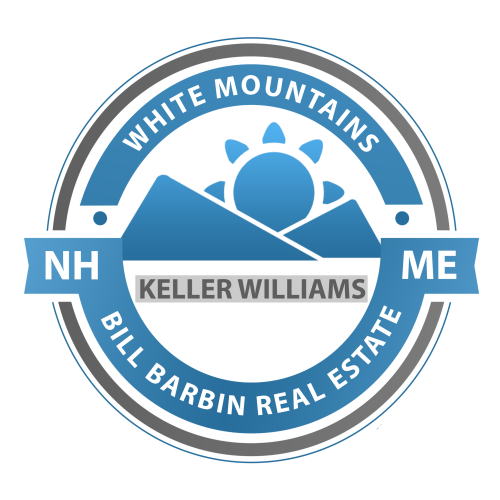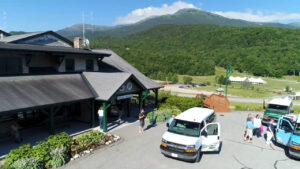The acquisition of local mountains, Attitash/Bear Peak and Wildcat, by Vail Resorts has been a point of contention (to put it lightly) for many New England skiers over the past two years. However, over the last ski season, it seems that many have reached their limit with the mountain conglomerate. Frustrations have been aired on online platforms like Facebook and Instagram at nauseum and, as a result, many skiers have looked to other, more locally owned mountains for their resort experience. The other outcome has been a resurgence in backcountry skiing.
If you happened to catch the April Fool’s Day edition of the Conway Daily Sun earlier this month, you might have read a spoof article entitled “Attitash Loses Lifts, But Adds Fitness to Skiing Experience”. While the main point was to poke fun at Vail, I couldn’t help but focus on the final line, “‘I wish things were like they were in the old days — of the Sixties, when these resorts were well-run; not the Thirties, when everyone skinned up the mountains, before we had lifts.’” That quote so eloquently put into perspective how easy it is to take things like chairlifts and groomers for granted. While New Hampshire has long since been a mecca in the ski industry on the East Coast, many people forget or are simply unaware of its humble beginnings during the Depression Era.
To the many New Englanders who take to the mountains when the snow falls, skiing is not merely a hobby, but a way of life. There is a sense of appreciation for the sport among New Englanders that has been handed down from generation to generation and rivals the likes of even California’s Squaw Valley. This is largely due to the history that went into the creation of the mountains we still ski on today. Speaking to Jeff Leich, Executive Director of the New England Ski Museum, on his motivation to devote his adult life to the history of skiing, “My father was an early New England skier and my brother and I heard stories that he told of things like the first downhill race on Moosilauke … I’ve come to realize that knowing a bit about what happened in the past at these places we enjoy on skis adds a dimension to the experience.” The work of New Englanders in the Civilian Conservation Corps during the 1930s helped New England to become the premier destination for East Coast skiing.
Today, New Hampshire is home to roughly twenty ski resorts as well as various backcountry skiing areas, all with deep-seated roots in American history. There is no denying that the Great Depression brought unprecedented hardships, but it also helped bring New Hampshire into the North American skiing spotlight. In a 1933 issue of The Sportsman, author Carl Shumay stated that, “It took a depression, a political revolution in America, and the creation of the nation-wide Civilian Conservation Corps with thousands of men working in the forests to make it possible. And apparently New Hampshire is the only State in the Union to have thought of it. But they did, and as a result New Hampshire today has the greatest network of cleared down-mountain ski trails on the North American continent…”

The call to action must have rang heavily in the ears of White Mountain locals as New Hampshire was the first state to fill its quota of Civilian Conservation Corps workers. Mount Washington Observatory co-founder, Robert Monahan, wrote to his parents in 1933 on the arrival of the 156th Company of CCC workers, “This outfit comprises 212 rookies, all from N.H., and the last of the 1,000 N.H. quota. … Many of the chaps are from Gorham and Berlin and the second cook is from Jackson. The whole outfit appears very well and I haven’t found a slacker yet.”
While skiing may not have been a matter of national interest, it aligned with the motivations behind the creation of the Civilian Conservation Corps as it, “…began expanding its efforts beyond the conservation of natural resources to include as well the construction of outdoor recreational amenities.” Prior to Civilian Conservation Corps involvement in the development of New Hampshire’s ski industry, creation of trails and corresponding infrastructure were predominantly done in spare time by private parties, or occasionally by individuals hacking their way through the forest. “…certain communities have been on occasion organized to care for the enthusiasts … but their efforts have been directed largely to caring temporarily for the skiers personal comforts rather than toward supplementing and developing the natural advantages of location and terrain.” Development of recreational ski areas corresponded with Roosevelt’s belief in utilizing natural resources for economic gain. With the arrival of the Civilian Conservation Corps, New Hampshire finally had the manpower and funding that it had needed to make skiing a permanent fixture in its mountain town communities.
A prime example of one of the larger Civilian Conservation Corps ski projects in New Hampshire took place on Mount Washington’s Tuckerman Ravine Trail. Under the direction of Charles Proctor and John Carleton, Dartmouth skiers and Olympic veterans, the Civilian Conservation Corps constructed what is known today as the John Sherburne Ski Trail. This project began in December of 1934 and was completed for the following ski season. At the time of its construction, the Sherburne Trail was, “…the major opus and showpiece of CCC activities carried on under the direction of the Federal and State forestry services.” Still in use today, this trail allows skiers an alternative to the more time-consuming walking route to the Pinkham Notch parking lot from the Little Headwall of Tuckerman Ravine on Mount Washington. This two and a half mile ski trail saves hikers hours in descent time as they traverse in under an hour through ungroomed backcountry skiing to the parking lot.
Also located on Tuckerman Ravine, and still in use today, is the Hermit Lake shelter. Like the Sherburne Trail, the Hermit Lake shelter was constructed by the Civilian Conservation Corps in 1934. “Its roofline was similar to the Howard Johnson’s roadside restaurants then springing up in New England, and it was soon nicknamed HoJo’s.” Its purpose was and continues to be a place for overnight skiers and hikers to rest or stay the night.
Thanks to the work of the Civilian Conservation Corps, Tuckerman Ravine became more accessible to skiers and hikers, which meant an increase in tourist attraction. Throughout the duration of the Depression, Tuckerman Ravine would host various events from slaloms to Olympic tryouts. The most legendary, however, were the American Inferno races that were held during the 1930s. Still widely discussed today, these races attracted participants from around the world and locals alike, while also bringing in large crowds of spectators. Though it did not solve the hardships that local businesses faced during the Depression, the new attraction to White Mountain skiing certainly helped stimulate local economies. Once its potential was realized, skiing, “…quickly attracted the notice of the local business community, and it wasn’t long before spring skiing in Tuckerman Ravine was being promoted by local chambers of commerce, the State of New Hampshire, and the Forest Service.”
The legacy of the Civilian Conservation Corps lives on today in the Mount Washington area. A pentathlon known as the Inferno Race is held annually on Tuckerman Ravine to commemorate the legendary American Inferno races of the 1930s. A total of 65 trails have been documented as being constructed by the Civilian Conservation Corps and, although many are closed, nearly 30% remain in use today. “Perhaps the best indication that the CCC tradition lived on in statehouses across the country, however, were the numerous state conservation corps created during the postwar era that borrowed the name of the New Deal program and intentionally replicated its work.” New Hampshire is one of the many states that created its own official conservation program and has multiple programs inspired by the original Civilian Conservation Corps. New Hampshire also participates in the Student Conservation Association, offering America’s youth various opportunities to continue on work in service of our country’s environment and its communities.
The Mount Washington Valley area is fortunate enough to have many independent organizations working on a local level to continue carrying the torch. Having taken up backcountry skiing myself over the last year, I find myself taking a crash-course of sorts in a culture and community whose primary goal is to continue the legacy of the work done for our sport during the 1930s. Part II of this article will explore local organizations, events, and businesses who strive to advocate for the preservation and continuity of the ski industry in our backyard, so stay tuned.
– Thank you to Denver DiMarzio for this glimpse into the past that made this such a great area.


